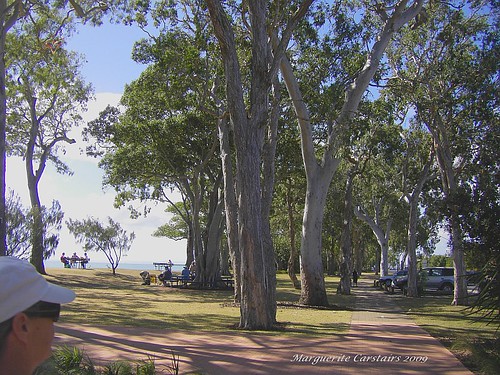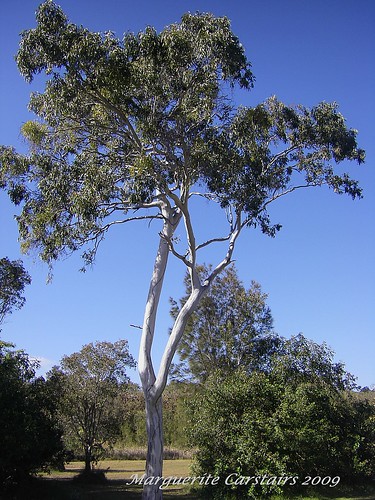
Hervey Bay must have the best trees I have ever seen, along the coast of the Bay.
Yet recently on the news someone wants the trees cleared for a better view of the water.
There is a bike and walking track from one end of the coast to the other and its along a very picturesque drive of Trees of great heights. They are very beautiful.
There are caravan parks situated right on the coast, and picnic areas and viewing spots. Its a very pleasant place to walk and enjoy the beauty of the Bay.
The road runs along the walking track, and its full of small shops and apartments. Its a very popular place for tourists who come for the whale watching and for fishing as well as the beauty of the Bay.
Eucalyptus is a diverse genus of flowering trees (and a few shrubs) in the myrtle family, Myrtaceae. Members of the genus dominate the tree flora of Australia. There are more than 700 species of Eucalyptus, mostly native to Australia, and a very small number are found in adjacent parts of New Guinea and Indonesia and one as far north as the Philippines islands. Only 15 species occur outside Australia, and only 9 do not occur in Australia. Species of Eucalyptus are cultivated throughout the tropics and subtropics including the Americas, England, Africa, the Mediterranean Basin, the Middle East, China and the Indian Subcontinent.
Eucalyptus is one of three similar genera that are commonly referred to as "eucalypts," the others being Corymbia and Angophora. Many, but far from all, are known as gum trees because many species exude copious sap from any break in the bark (e.g. Scribbly Gum). The name eucalyptus comes from the Greek: εὐκάλυπτος, eukályptos, meaning "well covered".
The most readily recognisable characteristics of Eucalyptus species are the distinctive flowers and fruit (capsules or "gumnuts"). Flowers have numerous fluffy stamens which may be white, cream, yellow, pink or red; in bud, the stamens are enclosed in a cap known as an operculum which is composed of the fused sepals or petals or both. Thus flowers have no petals, but instead decorate themselves with the many showy stamens. As the stamens expand, the operculum is forced off, splitting away from the cup-like base of the flower; this is one of the features that unites the genus. The name Eucalyptus, from the Greek words eu-, well, and kaluptos, cover, meaning "well-covered", describes the operculum. The woody fruits or capsules are roughly cone-shaped and have valves at the end which open to release the seeds. Most species do not flower until adult foliage starts to appear; Eucalyptus cinerea and Eucalyptus perriniana are notable exceptions.



140x45.jpg)




No comments:
Post a Comment